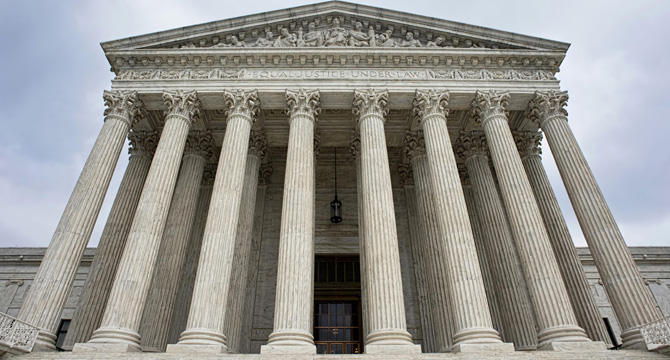SCOTUS Keeps Door Open for Federal-Law, State-Court Securities Class Actions. Where Does This Leave Katz?

In Cyan, Inc. v. Beaver County Employees Retirement Fund, No. 15-1439 (Mar. 20, 2018), the Supreme Court recently held that certain federal securities-law claims could proceed in state courts—despite the narrowing effect of the Private Securities Litigation Reform Act (PSLRA) and the Securities Litigation Uniform Standards Act (SLUSA)—and that those claims were not removable to federal court under SLUSA’s removal provision. But Cyan leaves intact (for now, at least) Seventh Circuit law on the removal of 1933 Act claims under the Class Action Fairness Act (CAFA).
By way of background, Congress enacted the PSLRA and SLUSA to address perceived abuses in securities class actions. SLUSA provides that certain state-law securities class actions are prohibited altogether, in both state and federal court. Some of those prohibited class actions can be removed to federal court where defendants can be assured that the claims will be dismissed.
SLUSA’s amendments to the 1933 Act were at issue in Cyan. Before SLUSA, the 1933 Act provided concurrent state and federal jurisdiction over some securities-law claims and prohibited removal of those claims. Defendants argued that, after SLUSA, state courts had lost concurrent jurisdiction over certain 1933 Act claims. The relevant SLUSA provisions might be charitably characterized as dense—justices referred to them as “gibberish” during argument—but the Court unanimously held that state courts maintain concurrent jurisdiction over 1933 Act class actions after SLUSA.
The Court also discussed whether 1933 Act class action claims are removable to federal court under SLUSA’s removal provision, and it held that 1933 Act class actions are not removable to federal court under SLUSA, a result consistent with the decisions reached by all seven of the circuits (including the Seventh) to have addressed the scope of SLUSA’s removal provision.
Regardless, some 1933 Act class actions still might be removable under the Class Action Fairness Act (CAFA). CAFA permits certain large (i.e., $5 million+) class actions to be removed to federal court when minimum diversity exists. What 1933 Act class actions can be removed under CAFA? The Seventh Circuit has analyzed the tension between CAFA and the 1933 Act’s removal bar. In Katz v. Gerardi, 552 F.3d 558 (7th Cir. 2009), Judge Easterbrook, in his opinion for the court, wrote that the 1933 Act’s removal bar and CAFA “are incompatible; one or the other must yield.” Rejecting interpretive canons that the specific statute controls over the general, Katz concluded that federal jurisdiction under CAFA, even for federal securities claims, does not depend on the 1933 Act and SLUSA’s removal provisions but on three exceptions for securities claims within CAFA. Under the framework in Katz, and later in Appert v. Morgan Stanley, 673 F.3d 609 (7th Cir. 2012), certain class actions arising under the 1933 Act could be removable under CAFA, even if they would not otherwise be removable given the 1933 Act’s general removal prohibition and SLUSA’s narrow removal provision, if they do not fit within CAFA’s three exceptions for securities claims.
CAFA was not on the forefront of the parties’ minds in Cyan, however, because the securities at issue met one of CAFA’s three exceptions Ultimately, Cyan’s discussion of removal addresses only whether 1933 Act cases are removable under SLUSA, and for now, at least, many 1933 Act cases in the Seventh Circuit still can be removed in the Seventh Circuit under CAFA.